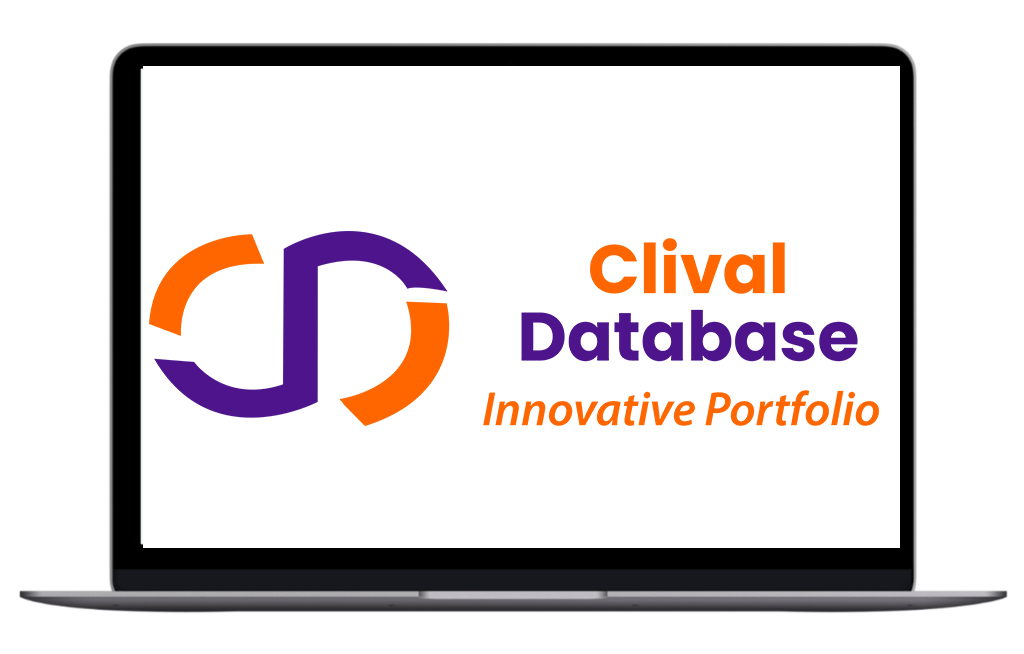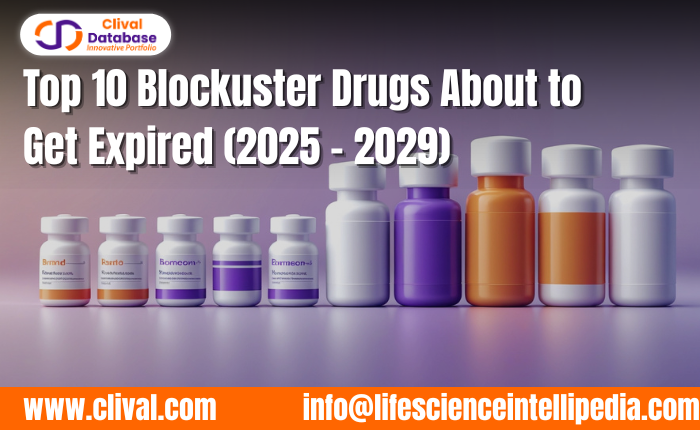Top 10 Blockbuster Drugs Facing U.S. Patent Expirations (2025–2029)
By 2030, drugs worth over $200 billion in annual sales will face U.S. patent expiry — a wave often called the “patent cliff.” Between 2025 and 2029, some of pharma’s biggest blockbusters — from immuno-oncology leaders like Keytruda to cardiology staples like Eliquis — will lose exclusivity, opening the door for biosimilars and generics.
Why does this matter? Patent expiry doesn’t just dent a company’s revenue line — it rewires markets. Prices collapse, payers renegotiate access, and procurement strategies flip almost overnight.
For pharma leaders, investors, and business development teams, these five years represent both risk and opportunity on a historic scale.
Quick Look at the Top 10 Blockbusters — U.S. Patent Expirations
Here is a quick look at the top 10 blockbuster drugs slated to lose U.S. exclusivity between 2025–2029, with projected patent-expiry years and manufacturers.
|
Drug |
Company |
Project U.S. Patent Expiry |
|
Keytruda (pembrolizumab) |
Merck & Co. |
2028 |
|
Eliquis (apixaban) |
BMS / Pfizer |
2026 (settlements/extensions 2027–2029) |
|
Opdivo (nivolumab) |
Bristol-Myers Squibb |
2028 |
|
Eylea (aflibercept) |
Regeneron / Bayer |
2025 – 2026 |
|
Enbrel (etanercept) |
Amgen |
2025 |
|
Trulicity (dulaglutide) |
Eli Lilly |
2027 |
|
Ibrance (palbociclib) |
Pfizer |
2027 |
|
Xarelto (rivaroxaban) |
J&J / Bayer |
2026 |
|
Prolia / Xgeva (denosumab) |
Amgen |
2025 – 2026 |
|
Entresto (sacubitril/valsartan) |
Novartis |
Mid-2025 (July) |
Keytruda (pembrolizumab) — 2028
Keytruda is the oncology behemoth — a multi-billion dollar engine across lung, melanoma, and a raft of tumor types — and its 2028 U.S. patent expiry is a strategic event, not just a date.
Competition will be invited and pricing pressure will follow; Merck will be active defending share with lifecycle plays and new combinations. Smart teams are already sizing biosimilar pipelines and watching payer rules that could accelerate switching.
Signals to watch
- Biosimilar filings and partnership deals targeting pembrolizumab biosimilars.
- Merck lifecycle moves: next-gen formulations, combo indications, or authorized-generic strategies.
- Medicare and payer negotiation signals that could change net pricing post-expiry.
Eliquis (apixaban) — 2026 (extensions to 2027–2029)
Eliquis sits at the center of the DOAC market — massive scripts, entrenched prescriber habits, and deep payer exposure. A 2026 expiry (with settlements stretching some protections into 2027–2029) doesn’t mean an immediate collapse; rather, change will be phased and strategic.
Expect generics to press margins where they can, while BMS/Pfizer will push patent-family defenses, authorized-generic options, and access negotiations to blunt the impact.
Signals to watch
- Settlement timeline moves and any new patent-family filings that delay or narrow generic entry.
- Reimbursement and formulary shifts from payers as pricing pressure builds regionally.
- Early generic launches or authorized-generic announcements that signal timing and competitive intensity.
Opdivo (nivolumab) — 2028
Opdivo is a pillar of modern immuno-oncology — widely used across tumor types and often paired in combination regimens that drive its clinical value. Its 2028 U.S. patent expiry will invite biosimilar R&D, but the real story will be how combination strategies and new label extensions are used to defend market share.
Expect a two-front battle: biosimilar developers working the chemistry and manufacturers pushing novel combos or next-gen iterations.
Signals to watch
- Biosimilar filings and early-stage developers targeting nivolumab.
- Combination-therapy trials where Opdivo is a backbone (these can preserve demand even after biosimilars arrive).
- Licensing or royalty deals that indicate strategic lifecycle management by BMS.
Eylea (aflibercept) — 2025–2026
Eylea is the retina blockbuster clinics reach for when vision is on the line — think wet AMD and diabetic macular edema. Its earlier 2025–26 patent exposure makes it one of the fastest-moving items on this list: markets will be contested quickly, and procurement cycles (hospitals, ophthalmic clinics) will feel the pressure first. Expect aggressive biosimilar development in ophthalmology and creative defenses from Regeneron/Bayer, including device-combo plays or dosing innovations.
Signals to watch
- Biosimilar filings and ophthalmic specialty filings targeting aflibercept.
- Regional procurement tenders and hospital formulary updates—these show where price pressure lands first.
- Device- or delivery-focused partnerships (e.g., sustained-release implants) that can blunt biosimilar impact.
Enbrel (etanercept) — 2025
Enbrel is the immunology veteran — a blockbuster that defined the TNF-inhibitor era. But with its 2025 expiry, the walls are coming down. Biosimilars are ready, and the shift could be sharp, especially in hospital and clinic tenders where price wins fast.
Amgen will lean on brand familiarity and physician loyalty, but the market dynamics will tilt heavily toward cost-driven switches.
Signals to watch
- Immediate biosimilar launch announcements and partnership tie-ups.
- Hospital procurement tenders where Enbrel could lose formulary position overnight.
- Pricing shocks across immunology classes as payers push broader biosimilar adoption.
Trulicity (dulaglutide) — 2027
Trulicity is one of the crown jewels of the GLP-1 class — a therapy riding the global diabetes and obesity wave with huge momentum. Its 2027 U.S. patent expiry will be closely watched because the stakes aren’t just revenue; it’s market share in a red-hot category.
Lilly has every incentive to protect its franchise, likely through combo formulations, new delivery mechanisms, or even authorized generics to keep prescriber trust while limiting biosimilar erosion.
Signals to watch
- Branded defense plays: new formulations, weekly vs. monthly dosing innovations.
- Partnership or combo trials linking Trulicity with other metabolic agents.
- Authorized generic pathways to maintain volume while resetting pricing.
Ibrance (palbociclib) — Pfizer — 2027
Ibrance reshaped breast cancer treatment by opening the door for CDK4/6 inhibitors. With patent expiry in 2027, its future is tied to two pressures: biosimilars targeting palbociclib itself and rival CDK4/6 molecules already carving market share.
Pfizer’s defense strategy is expected to lean on combination regimens and label extensions, but the competitive intensity will be sharp given the category’s maturity.
Signals to watch
- Biosimilar development pipelines for palbociclib.
- Competitive CDK4/6 inhibitors (e.g., ribociclib, abemaciclib) and their trial wins.
- Combination regimens that extend Ibrance’s role in metastatic and adjuvant settings.
Xarelto (rivaroxaban) — 2026
Xarelto is a backbone DOAC, prescribed across stroke prevention, DVT, and post-surgical clot management. Its 2026 U.S. patent expiry makes it one of the most closely watched cliffs in cardiology. With high outpatient volumes, even a small price shift ripples across payers and hospital budgets. Generics are expected to move quickly, and formulary tightening will likely follow as insurers push for cheaper alternatives.
Signals to watch
- Generic entry timing and FDA approvals for rivaroxaban copies.
- Payer formulary moves that could accelerate mass switching.
- Global tender results showing early pricing benchmarks for generics.
Prolia / Xgeva (denosumab) — 2025–2026
Denosumab, marketed as Prolia for osteoporosis and Xgeva in oncology, is a dual-market powerhouse. But with U.S. patent expiry looming in 2025–26, Amgen faces steep biosimilar competition on two fronts: primary care bone health and specialty oncology. The overlap means revenue erosion could be faster than typical biologic cliffs, especially in regions where tender systems dominate.
Signals to watch
- Biosimilar filings in both osteoporosis and oncology indications.
- Hospital and specialty clinic tenders that may swing large patient volumes.
- Reimbursement shifts in Medicare and private payers responding to generic pressure.
Entresto (sacubitril/valsartan) — Novartis — Mid-2025 (July)
Entresto has become a go-to in heart failure management, reshaping standard of care with proven outcomes. But with a July 2025 U.S. patent expiry, Novartis faces one of the earliest cliffs on this list. Generic entrants are expected to move fast, and given Entresto’s hospital and outpatient footprint, formulary updates and payer negotiations could shift within months. Speed of substitution will be key to watch.
Signals to watch
- Generic approvals timed around mid-2025 and their launch strategies.
- Hospital formulary shifts that could dictate uptake velocity.
- Payer negotiations where Entresto’s net price may face immediate compression.
Conclusion
The next five years will redraw the pharma map. Blockbusters spanning DOACs, oncology immunotherapies, biologics, and metabolic drugs are staring down expiries worth hundreds of billions in cumulative sales at risk.
And it’s the same handful of giants — Pfizer, BMS, Merck, Amgen, Novartis, Bayer — who will feel the heaviest impact. Some will defend with lifecycle pivots; others will face immediate erosion as biosimilars and generics strike.
Action checklist:
- BD leaders: Build biosimilar watchlists and map settlement timelines to prioritize licensing opportunities.
- Procurement: Secure API and biosimilar supplier relationships ahead of tender shocks.
- Investors: Track near-term expiries (Entresto, Enbrel, Eylea) for revenue volatility; watch 2027–2028 cliffs for long-term portfolio risk.
- R&D: Accelerate lifecycle programs — combo therapies, new dosing, or delivery devices — before price erosion hits.
Book a Clival competitive & licensing scan demo to identify who’s filing, where gaps exist, and how to position before the cliff arrives.
Frequently Asked Questions

Optimize Your trial insights with Clival Database.
Are you exhausted from the uncertainty of trial insights pricing? Clival Database ensures the clarity in the midst of the global scenario for clinical trials to you.Clival Database is one of the best databases that offers an outstanding number of clinical trial data in terms of 50,000+ molecules and from primary regulatory markets as well as new entrants like Indian and Chinese markets.
Elevate your trial success rate with the cutting-edge insights from Clival database.
Check it out today and make more informed sourcing decisions! Learn More!







